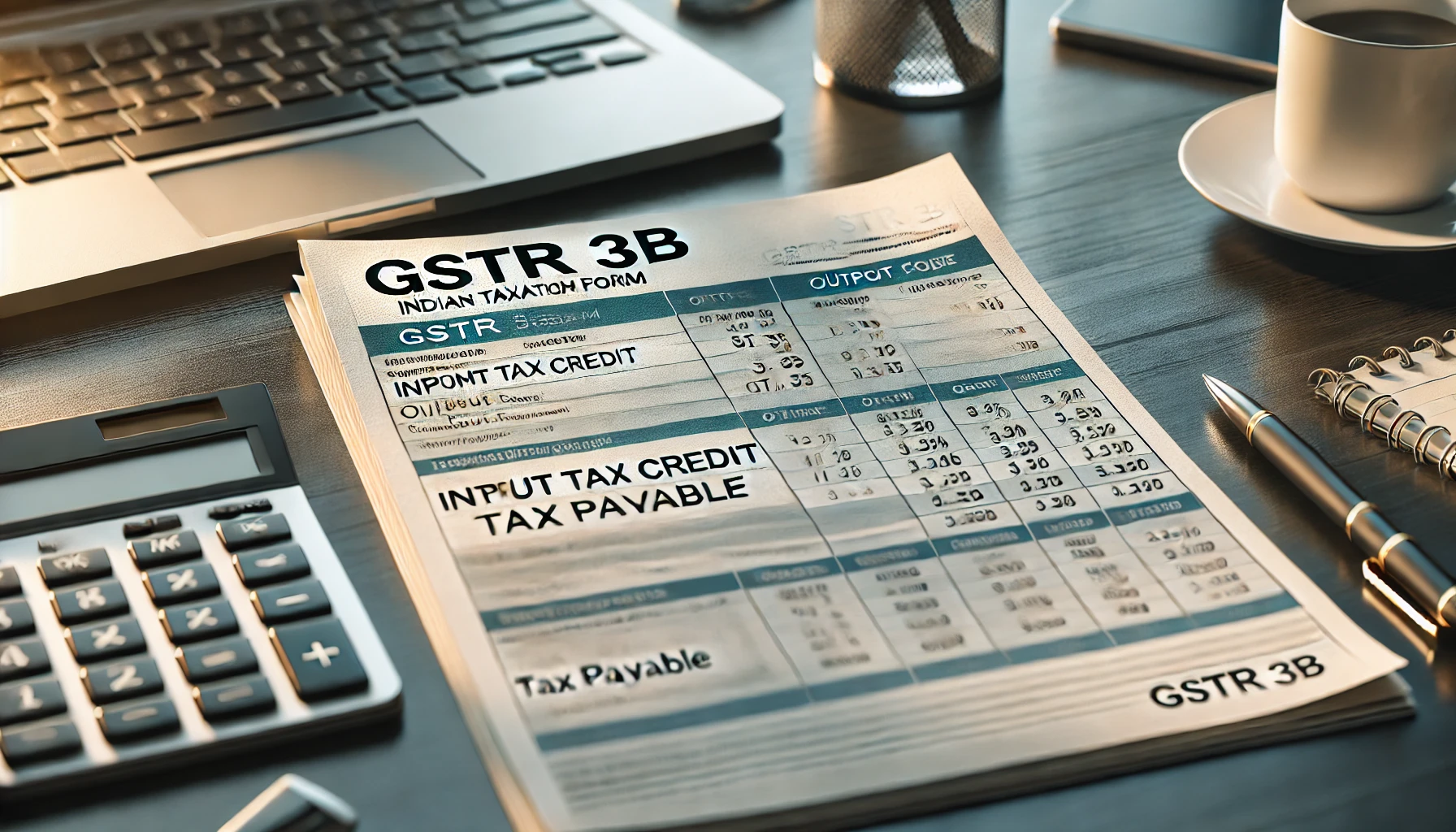GSTR 3B is crucial for businesses operating in India to ensure GST (Goods and Services Tax) compliance and smooth operations. It is a self-declaration form that every registered GST taxpayer must file. In this guide, we’ll walk you through the key details of GSTR-3B, including its filing process, due dates, and eligibility criteria. Let’s break it down in an easy-to-understand manner.
What is GSTR 3B?
GSTR-3B is a simplified monthly return form that businesses use to report their tax liabilities under the Goods and Services Tax regime. It captures a summary of a taxpayer’s outward supplies (sales), inward supplies (purchases), and the resulting tax payable. Even if no transactions occur during a given period, the form must still be filed.
Who Needs to File GSTR 3B?
All registered taxpayers under the GST system, including regular and casual taxpayers, are required to file GSTR-3B. However, the following categories of taxpayers do not need to file this return:
- Taxpayers under the Composition Scheme
- Input Service Distributors
- Non-resident taxable persons
- Non-resident suppliers of Online Information and Database Access or Retrieval (OIDAR) services
Structure of the GSTR 3B Form
The GSTR-3B form is divided into various sections, each aimed at reporting different aspects of the business’s transactions. Some key sections include:
- Outward Supplies: Sales and other outward transactions
- Inward Supplies (Reverse Charge): Purchases where the recipient is liable to pay tax
- Input Tax Credit (ITC) Claimed: Credit for taxes paid on purchases
- Summary of Tax Liabilities: Total GST payable for the period
- Late Fees & Penalties: Any additional charges for late filing
How to File GSTR 3B: Step-by-Step Process
Filing GSTR-3B is a straightforward process if you follow these steps:
- Login to the GST Portal: Use your credentials to access the official GST portal.
- Select Your Return Period: Go to the ‘Returns Dashboard’ and choose the relevant financial year and tax period for filing.
- Fill in the Required Information: Enter details about your sales, purchases, ITC, and tax liability.
- Review & Submit: Double-check all the details for accuracy before submitting the form.
- Acknowledgement: Upon successful submission, a confirmation message and acknowledgment will be generated.
GSTR 3B Filing Due Date
The GSTR 3B return is generally due by the 20th of the following month. However, businesses should always check for updates from the GST department, as filing deadlines may be extended in some cases. It’s essential to file on time to avoid penalties and interest charges.
Why is GSTR 3B Filing Important?
Filing GSTR 3B accurately and on time is a key part of GST compliance. By submitting this form, businesses report their tax liabilities, input tax credits, and other vital information, ensuring they remain compliant with the GST law. Failing to file correctly or on time can lead to penalties, interest, and legal consequences.
Final Thoughts on GSTR-3B Filing
GSTR-3B plays a vital role in the overall GST compliance framework. It simplifies the filing process, allowing businesses to provide a summary of their transactions instead of detailed records. Staying updated on any changes to filing procedures and deadlines is essential for businesses to avoid unnecessary fines and complications.
Frequently Asked Questions (FAQs)
1. Do I need to file GSTR 3B if there are no sales or purchases in a month?
Yes, even if there are no transactions in a month, GSTR-3B must still be filed.
2. Do I need to provide invoice-wise details in GSTR-3B?
No, GSTR-3B requires only a summary of your transactions, not the invoice-wise details.
3. What is the difference between GSTR-1 and GSTR-3B?
GSTR-1 reports the detailed sale transactions, while GSTR-3B summarizes your sales, ITC claims, and net tax payable for the period.
4. What is the difference between GSTR-3 and GSTR-3B?
GSTR-3 was initially planned as an auto-populated return, but it has been replaced with GSTR-3B, a self-declared summary return, due to implementation challenges.
5. Can I file GSTR-3B for multiple GSTINs together?
No, GSTR-3B must be filed separately for each GSTIN. You cannot club returns for multiple GST registrations.
6. Can I use ClearTax to file GSTR-3B?
Yes, you can prepare and file GSTR-3B using ClearTax, which allows integration with software like Tally for seamless data import and filing.
7. Is invoice matching done in GSTR-3B?
No, GSTR-3B does not involve invoice matching. It’s a summary return that does not require detailed matching of invoices.
By following this guide and using the right tools, businesses can stay compliant with GST regulations and avoid penalties.
